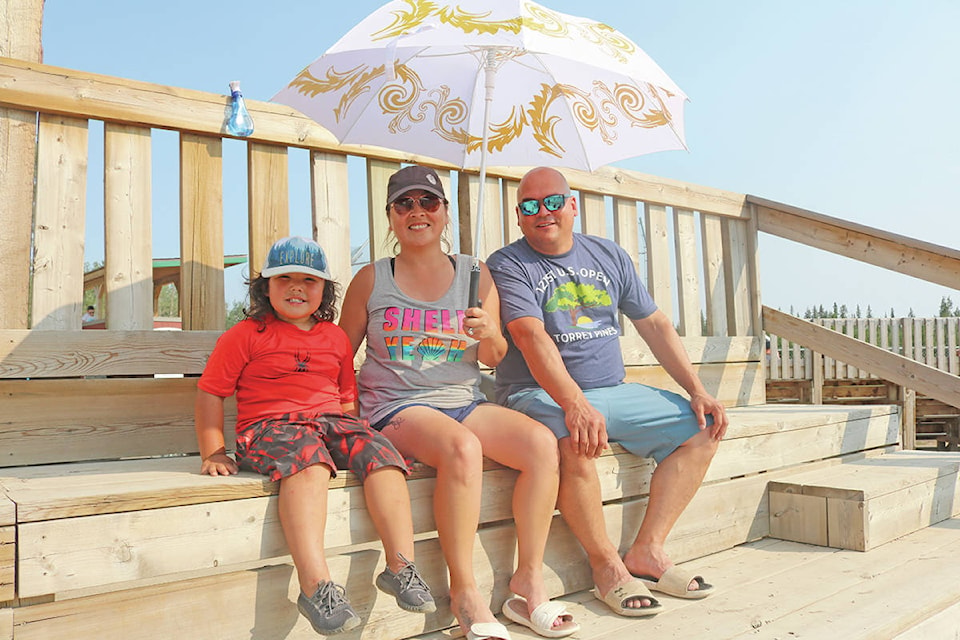August has started with record-breaking single-day temperatures in some areas of the Northwest Territories.
Aug. 2 saw daily averages smashed in at least six NWT communities, including the capital, according to Natalie Hasell, a warning preparedness meteorologist with Environment and Climate Change Canada.
Yellowknife reached an unprecedented maximum daily temperature record of 32.6 C in mid-afternoon on Aug. 2, eclipsing the previous historic figure of 32.5 C, set on July 16, 1989.
The previous day reached 31 C.
Although too early to determine for August 2021, the monthly daily temperature — combining averages from daytime and nighttime — on average for that month up to last year was 14.2 C.
Hasell said there’s still plenty of variables throughout the rest of the month that can bring this August in line with that historic figure, including tempered daytime highs and nightly lows.
An Environment Canada heat advisory was issued for areas of the NWT for Aug. 1 and 2. Such advisories are marked by temperatures of 29 C or more during the day and not falling below 14 C at night. The pattern has to last at least two days in a row, Hasell added.
Five other NWT communities entered the record books on Aug 2, Hasell said. That included Deline at 30.4 C, which broke its 1998 record for the day of 29.5 C.
Fort Providence reached 34.6 C, overtaking its record set last year at 33.2 C.
Nahanni Butte, which recorded 35.1 C, shattered its previous high of 32.5 C.
Wrigley climbed to 32.1. The community’s previous record stood at 32 C.
Gameti tied its record from last year at 30.1 C.
July 2021, conversely, was cooler overall at 16.2 C for the monthly average, compared to the historic 17 C.
According to Environment Canada data, neither June nor July broke the 30 C mark in Yellowknife.
Precipitation
This summer has also been much drier in Yellowknife compared to recent summers.
June brought total rainfall of 31.8 mm while July had 41.8 mm. As of Aug. 4, there was no precipitation for this month.
In 2020, there was 193.6 mm of rain between June 1 and Aug. 31, which was above the historic 178 mm average for those three months.
August last year entailed 67.4 mm of rain to add to June’s 28.6 mm and July’s 97.6 mm.
In 2018, the summer saw 239 mm of rain during the same period.
“Looking at the analysis and upper air analysis, what we have seen repeatedly is an upper ridge and a structure higher up in the atmosphere repeatedly hanging over Western Canada, usually anchored in the U.S and extending into the Prairies and NWT,” Hasell said. “It is a ridge of high pressure that is bringing the heat or allowing it to spread into the area. It tends to move rather slowly, so, typically, if you are near the centre of the ridge you are in that hot, stable stagnant air.”
These warm conditions usually don’t allow for much precipitation, she said.
“When we do get precipitation, it might be with thunder storms and lightning strikes, which will cause more fires and it becomes an interesting, compounding problem,” she added.
Health warnings
When conditions combine with high temperatures and poor, stagnant air quality, Hasell said there are numerous precautions people should take.
“Everyone is affected by (forest fire) smoke and everyone is affected by heat but some parts of the population more so,” she said, citing young children, senior citizens, pregnant women and people with cardiovascular, heart, or kidney diseases or diabetes.
She said there are also a range of concerns about mental health under such challenging conditions, most acutely for people who take medications for various ailments.
People should avoid strenuous activity, like work exercise or sports — or at least closely monitor those situations — and avoid leaving pets in vehicles.
“We would prefer that people avoid the exposure to extreme heat outdoors and we would prefer people stay hydrated and cool and eat the right foods,” said Hasell. “We also realize that after a year-and-a-half of COVID restrictions, if people can take advantage of the weather and gather, they will do it. But it is super important to pay attention when it comes to smoke or heat.”
